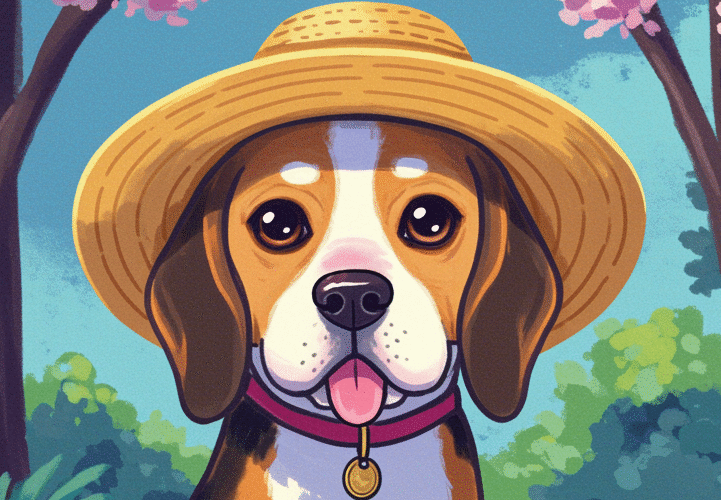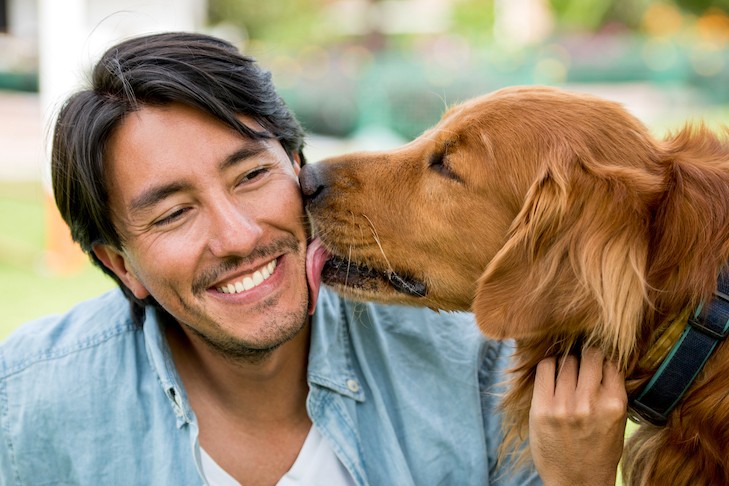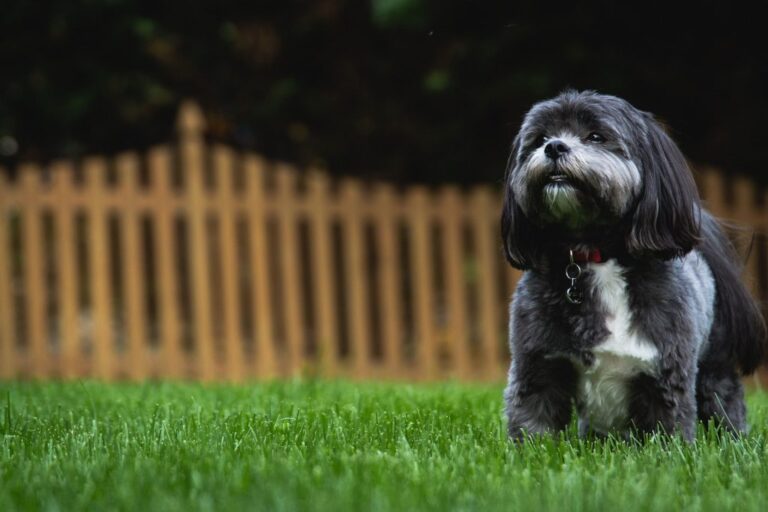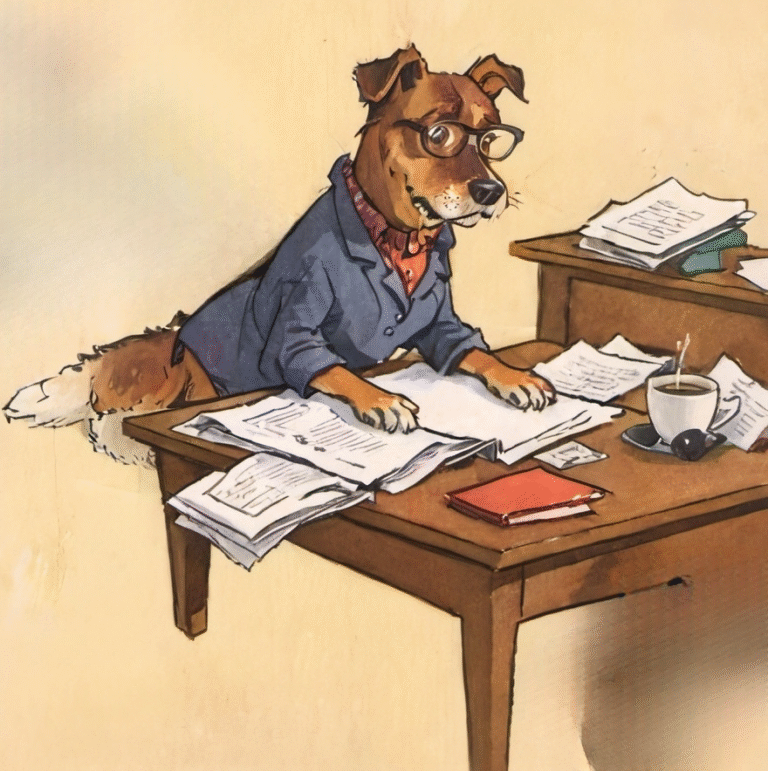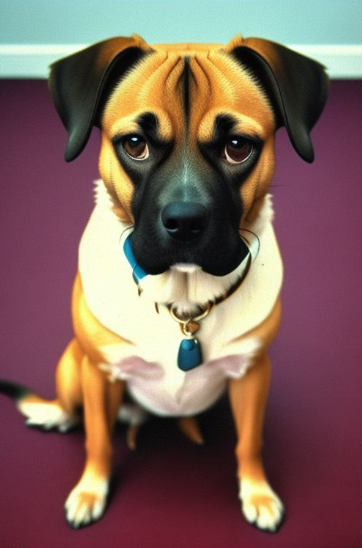Imagine the heart-wrenching moment when your beloved furry friend, with all their playful energy and wagging tail, suddenly finds themselves in excruciating pain due to broken ribs. It’s a situation no dog owner ever wants to experience. But fear not! In this comprehensive guide, we will provide you with expert tips and advice on how to care for a dog with broken ribs, helping you navigate through this challenging time with confidence and compassion.
Throughout this article, we will take you on a journey of resilience and recovery, sharing valuable insights into understanding the causes and symptoms of broken ribs in dogs. We will explore the crucial steps you need to take in seeking professional help and creating a safe environment that promotes healing. Along this road to recovery, we will delve into essential aspects such as proper nutrition, exercise modifications, pain relief options, and signs of improvement to watch out for.
This article aims not only to educate you but also to reassure you that there is hope for your four-legged companion. By implementing the expert advice provided here, you can expect your furry friend to bounce back stronger than ever before. So let’s dive into this guide together, empowering ourselves with knowledge and embarking on a journey of healing that promises a brighter future for both you and your loyal canine companion.
The Story of Max: A Tale of Resilience and Recovery
Imagine a brave little soul named Max, a golden retriever with a heart as pure as gold. One fateful afternoon, while chasing squirrels in the park, Max encountered an unfortunate accident that left him with several broken ribs. It was a heartbreaking sight to see this once lively and energetic pup now writhing in pain. But little did everyone know that this was just the beginning of Max’s remarkable journey towards resilience and recovery.
Max’s journey began at the hands of his loving owner, Sarah, who rushed him to the veterinarian as soon as she noticed something wasn’t right. The vet examined Max carefully, diagnosing him with broken ribs due to the impact from his fall. The news sent waves of worry through Sarah’s heart, but she remained steadfast in her determination to help her furry companion heal.
With gentle care and unwavering dedication, Sarah created a nurturing environment at home for Max’s recovery. She padded his bed with soft blankets and ensured he had minimal movement to prevent further injury. Despite the pain he endured, Max could sense Sarah’s love surrounding him like a protective shield.
Understanding Broken Ribs in Dogs: Causes and Symptoms
Dogs are curious creatures, always ready to explore the world around them. However, their adventurous nature can sometimes lead to unfortunate accidents, such as broken ribs. Understanding the causes and symptoms of this condition is crucial for providing the necessary care and ensuring your furry friend’s speedy recovery.
Possible Causes: Broken ribs in dogs commonly occur due to trauma or external forces. Accidents like car collisions or falls from heights are frequent culprits, but even vigorous play sessions with other dogs can result in rib fractures. Additionally, certain medical conditions like osteoporosis or cancer can weaken the bones, making them more prone to injury.
Telltale Symptoms: Identifying broken ribs in dogs can be challenging since our four-legged companions often hide their pain. However, there are some signs that attentive pet parents should look out for. These may include difficulty breathing or an increased respiratory rate, whimpering or whining when touched around the ribcage area, reluctance to move or engage in physical activity, lack of appetite, and unusual postures or guarding of the injured area.
Remember that it is crucial to consult with a veterinarian if you suspect your dog has broken ribs. They will conduct a thorough examination and may request X-rays or other diagnostic tests to confirm the diagnosis. Once you have a clear understanding of your dog’s condition, you can proceed with providing appropriate care tailored to their specific needs.
Seeking Professional Help: The First Step to Recovery
When it comes to caring for a dog with broken ribs, seeking professional help is crucial for their recovery. A veterinarian experienced in orthopedic injuries will be able to provide the expertise and guidance needed to navigate this challenging journey. Remember, you are not alone in this; there are skilled professionals ready to support you and your furry companion every step of the way.
The initial consultation with a veterinarian will involve a thorough examination of your dog’s condition. This includes assessing the extent of the rib fracture(s), determining whether there are any associated injuries, and evaluating your dog’s overall health. Diagnostic tools such as X-rays may be used to obtain a clearer picture of the fractures.
Based on their findings, the veterinarian will develop an individualized treatment plan tailored to your dog’s needs. This may include pain management strategies, recommendations for restricted activity, and advice on providing a safe environment conducive to healing. By partnering with a knowledgeable professional, you can ensure that your beloved companion receives the best care possible.
Creating a Safe and Comfortable Environment: The Road to Healing Begins at Home
When caring for a dog with broken ribs, creating a safe and comfortable environment at home is crucial to facilitate their healing journey. Your furry friend needs a calm and peaceful space where they can rest undisturbed. Consider setting up a designated area away from high-traffic areas in your house, ensuring it is warm, quiet, and free from any hazards that may cause accidental injuries.
Start by providing your dog with a soft and supportive bed or mat that offers ample cushioning. Opt for materials that are easy to clean and hypoallergenic. Placing extra blankets or pillows around the bed can help create a cozy nest-like feel for your canine companion.
It’s important to remember that during the recovery period, your dog’s movements should be restricted to prevent further injury. You may need to invest in a well-fitting chest harness or sling to support their torso while assisting them in walking or going outdoors for bathroom breaks. This will provide stability and minimize strain on their injured ribs.
“Creating an environment tailored for your dog’s recovery not only ensures their physical safety but also contributes to their emotional well-being.”
Nurturing Your Dog’s Well-Being: Nutrition and Hydration Tips
Proper nutrition and hydration are vital for your dog’s overall well-being, especially when they are recovering from broken ribs. Providing the right diet can help support their healing process and boost their immune system. Here are some expert tips to ensure your furry friend receives the necessary nutrients and stays hydrated:
1. Choose a Balanced Diet:
During the recovery period, it is crucial to feed your dog a balanced diet that includes high-quality protein, essential fatty acids, vitamins, and minerals. Opt for premium dog food brands that specifically cater to the nutritional needs of dogs in recovery or consult with your veterinarian to create a customized meal plan.
Creative Tip: Consider preparing homemade meals using fresh ingredients like lean meats (such as chicken or turkey), vegetables (carrots or broccoli), and whole grains (brown rice or quinoa). Not only will this provide wholesome nutrition, but it can also give you an opportunity to bond with your furry friend in the kitchen.
2. Ensure Adequate Hydration:
Maintaining proper hydration is critical for dogs with broken ribs as it helps facilitate healing processes and aids in digestion. Keep fresh water available at all times in easily accessible bowls throughout your home. Monitor their water intake closely to ensure they are drinking enough.
Creative Tip: In addition to regular water bowls, consider offering your dog flavored water by infusing it with low-sodium broth or adding ice cubes made from bone broth. This not only adds variety but can also entice them to drink more while providing additional nutrients.
3. Supplement if Necessary:
In consultation with your veterinarian, you may want to consider adding supplements to bolster your dog’s recovery process. Omega-3 fatty acids, glucosamine, and chondroitin are commonly recommended supplements that can promote joint health and reduce inflammation.
Creative Tip: Introduce supplements in the form of tasty treats or mix them into your dog’s food to make it more appealing. Consider making frozen treats by blending their favorite fruits (without any toxic components) with water or yogurt and freezing the mixture in ice cube trays for a refreshing and nutritious treat.
Remember, providing proper nutrition and hydration not only aids in your dog’s recovery but also shows them the love and care they deserve. By nourishing their body, you are helping create the optimal environment for healing, leading to a brighter and stronger future for your beloved companion.
Getting Moving Again: Exercise Modifications and Physical Therapy
After a dog sustains broken ribs, it is crucial to approach exercise with caution, as excessive physical activity can hinder the healing process. However, keeping your furry companion inactive for too long can lead to muscle weakness and stiffness. Thus, finding the right balance between rest and carefully modified exercise is key.
To ensure your dog’s well-being during the recovery period, consider consulting a professional veterinary physical therapist. These experts have extensive knowledge in designing exercise programs tailored specifically for dogs with broken ribs. They can provide guidance on gentle movements that promote blood circulation, maintain joint flexibility, and prevent muscle atrophy.
Physical therapy may include passive range of motion exercises to gently stretch and mobilize your dog’s muscles. Additionally, targeted exercises like controlled walks or swimming can help rebuild strength without putting excessive strain on the injured area. Always closely monitor your pet during these sessions and stop immediately if they show signs of distress or pain.
The Road to Recovery: Patience, Love, and Support
When it comes to helping your furry companion recover from broken ribs, patience, love, and support are invaluable. Just like humans, dogs need emotional care during the healing process. Your dog may experience fear or anxiety after their injury. By offering a nurturing and comforting environment, you can help alleviate their stress and promote a positive mindset.
One way to provide emotional support is through gentle affection and reassurance. Dogs are incredibly perceptive creatures; they can sense your emotions and respond to them accordingly. Shower your loyal friend with hugs, gentle pats, and soothing words of encouragement. Let them feel your unwavering love as they navigate the road to recovery.
In addition to affectionate gestures, engaging in activities that bring joy can also aid in the healing process. Engage in low-impact play or provide mentally stimulating toys that do not put strain on their injured ribs. For example, puzzle toys can occupy their minds while allowing them to rest comfortably. These activities not only distract from any pain or discomfort but also promote a sense of happiness during this challenging time.
Pain Relief for Your Furry Friend: Medications and Natural Remedies
When it comes to providing pain relief for your beloved companion with broken ribs, there are various options available, both in the form of medications and natural remedies. It is crucial to consult your veterinarian before administering any medication to ensure proper dosage and suitability for your dog’s specific condition. Remember, pain management is an essential aspect of their recovery, promoting comfort and overall well-being.
Medications: Your veterinarian may prescribe non-steroidal anti-inflammatory drugs (NSAIDs) to alleviate the pain associated with broken ribs. These medications reduce inflammation and provide relief from discomfort. However, it is important not to give human NSAIDs to your dog without professional guidance, as they can be harmful.
In some cases where the pain is severe or long-lasting, opioids may be prescribed under strict supervision. These strong pain relievers can offer significant comfort but should only be used as directed by your vet due to their potential side effects. It’s important to note that medication alone does not address the root cause of the problem; it should be complemented by other aspects of care.
Natural Remedies: Alongside or in combination with prescribed medication, several natural remedies can assist in managing your dog’s pain while promoting healing. Herbal supplements such as turmeric and ginger have anti-inflammatory properties that may help alleviate discomfort. Warm compresses or therapeutic heat packs applied gently to the affected area can also offer soothing relief.
In addition, acupuncture sessions conducted by a licensed veterinarian trained in this alternative therapy have been shown to effectively reduce pain levels in dogs with musculoskeletal injuries. This holistic approach stimulates specific points on the body using fine needles, promoting relaxation and healing from within.
Remember that each dog’s response to pain relief may vary, and what works for one might not work for another. Be patient and observant, closely monitoring your furry friend’s reaction to any medication or natural remedy. With the right combination of pain management techniques, you can provide comfort to your dog during their recovery journey, helping them stay positive and resilient.
Recognizing Signs of Improvement: Celebrating Small Victories
When caring for a dog with broken ribs, it’s crucial to keep a keen eye on their progress and celebrate every small victory along the way. Recognizing signs of improvement not only helps you gauge your furry friend’s recovery but also serves as a source of encouragement for both you and your beloved companion.
One significant sign of progress is when your dog begins to regain their appetite. A loss of appetite is common after experiencing trauma, including broken ribs. However, as the days go by and your diligent care starts to show results, you may notice your pup showing interest in their food again. This small victory signifies that their body is healing, and they are regaining strength.
In addition to appetite restoration, an important indicator of improvement is increased energy levels. After an injury like broken ribs, dogs often become lethargic and experience a decrease in activity. However, as they heal and receive proper care, you may gradually witness them becoming more active – wagging their tail more frequently or even attempting gentle playfulness with toys or other pets. These moments are causes for celebration as they demonstrate that your diligent efforts are paying off.
Furthermore, observing improved breathing patterns can be another positive sign during recovery. Dogs with broken ribs often struggle with breathing due to pain and restricted movement caused by the injury. As time progresses and healing takes place, you may notice that your furry companion’s breathing becomes less labored or that they no longer exhibit signs of discomfort while taking deep breaths. Witnessing this improvement can serve as a heartening reminder that your unwavering dedication to their well-being is yielding tangible results.
Time Heals All Wounds: Recovery Time and What to Expect
When it comes to caring for a dog with broken ribs, one crucial aspect to consider is the recovery time and what you can expect throughout the healing process. Just like humans, dogs require time for their bodies to heal and regain strength. Patience and understanding are paramount as you support your furry friend on their journey toward recovery.
The Duration of Recovery: The recovery time for broken ribs in dogs varies depending on various factors such as age, overall health, the severity of the injury, and the effectiveness of treatment. Typically, it takes around six to eight weeks for fractured ribs to heal fully. However, this timeline can extend if there are complications or underlying conditions present.
But fret not! While waiting for your beloved companion’s ribs to mend, cherish this opportunity to strengthen your bond with them. Engage in gentle activities they enjoy that do not put strain on their injured chest area. Spend quality time together with calming activities such as grooming or relaxing massages that promote trust and relaxation.
Pawsitive Reinforcement: The Power of Love and Encouragement for Your Dog’s Healing Journey
Your dog is not just a pet; they are a beloved member of your family. As you care for your furry friend during their healing journey, remember that love and encouragement play a crucial role in their recovery. Pawsitive reinforcement is more than just a catchy phrase; it is an essential aspect of providing emotional support and promoting overall well-being.
One powerful form of pawsitive reinforcement is through verbal praise. Dogs thrive on hearing kind words from their humans, especially when they are going through a challenging time. Soothingly speak to your pup, using gentle and encouraging words like “good boy” or “you’re doing great.” This not only reassures them but also boosts their confidence as they navigate the healing process.
In addition to verbal praise, physical touch can be incredibly therapeutic for dogs with broken ribs. Gently stroking your dog’s fur or giving them soothing massages can help alleviate stress, promote relaxation, and enhance the bond between you both. Remember to be gentle and attentive to any signs of discomfort or pain as you provide this nurturing touch.
Conclusion
In conclusion, caring for a dog with broken ribs can be a challenging and delicate process, but with the right knowledge and support, your furry companion can make a remarkable recovery. Remember to rely on the expertise of veterinarians and implement their recommendations with dedication and love. Your dog’s healing journey will require patience, perseverance, and plenty of TLC. As you witness their progress day by day, you’ll be inspired by their resilience and strength. Soon enough, those broken ribs will become a distant memory as your pup returns to a life full of joyous tail wags and endless playtime.
